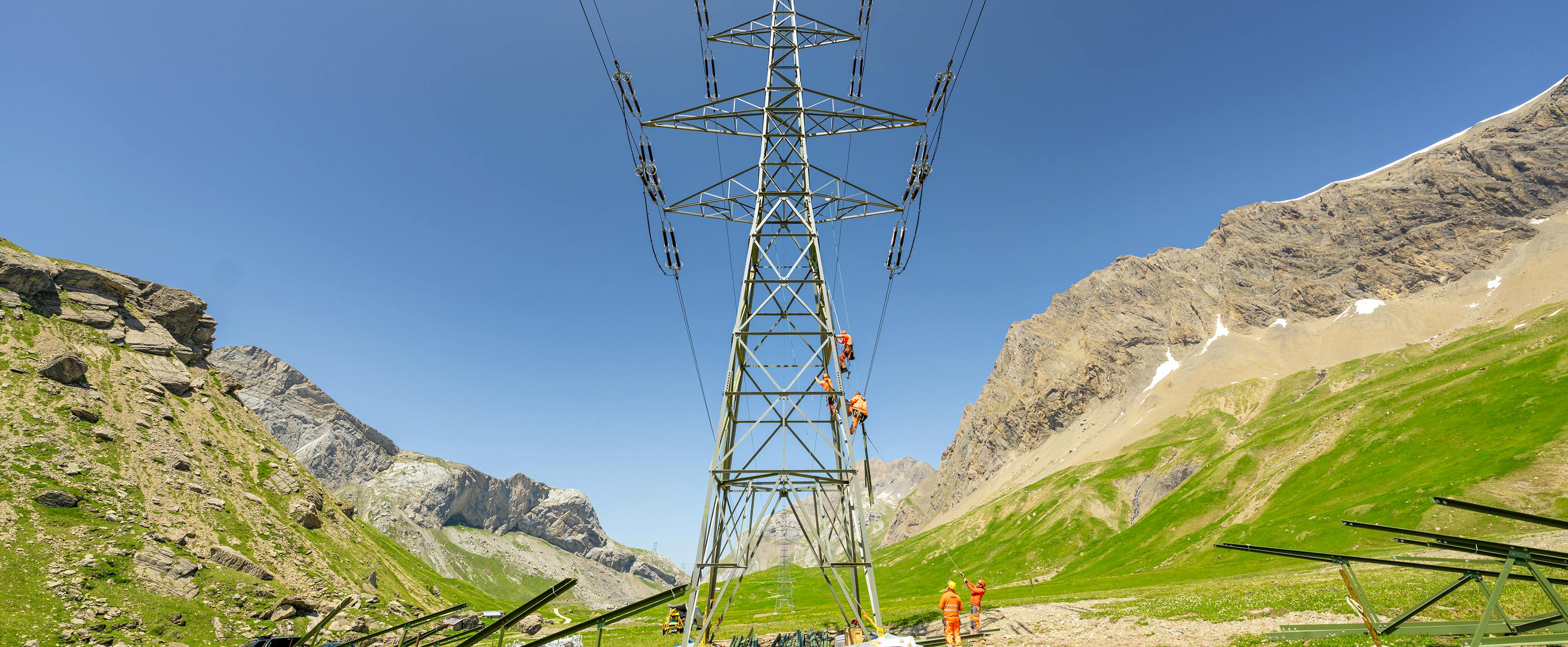
Work is carried out during the day, electricity flows at night. This is the daily routine on the extra-high-voltage power line that crosses the Sanetsch Pass between the canton of Valais and the canton of Bern.
The line, which was built in the 1950s, is now in need of complete renovation after more than seventy years of service. At the highest point of the line, the pylons reach an altitude of 2,200 metres, which means that work can only be carried out during the warmer months of the year. The renovation project includes the replacement of the conductors (the cables that carry the electricity) and insulators, the structural reinforcement of 106 pylons and 24 foundations, as well as the relocation of 3 poles damaged by a landslide in 2017 in the area upstream from Gsteig (canton of Bern).
An unusual construction site
During interventions of this magnitude, lines are usually switched off for the duration of the work, and remain out of service for months at a time. However, the line between Chamoson (canton of Valais) and Mühleberg (canton of Bern) is crucial for the transport of energy between the Valais and the Central Plateau. Operating the grid without it for an extended period was not an option.
For this reason, various measures have been taken so that the line can be renovated without compromising the transport capacity of the grid. Firstly, the renovation work has been divided into two tranches. The first part of the work began in 2024 and will continue until 2026. The second part will start in 2030. The line will remain in operation and carry electricity for three years during the work. This will allow renovation projects planned for other lines in the region to go ahead.
In addition, a new approach has been adopted for the Sanetsch construction site: renovation work is carried out during the day and energy is transported at night. The solution was put into practice in just five months to guarantee the transport of the energy volumes estimated in the latest forecasts for 2025. The task is complex: assembling and dismantling the site installations in the space of a few hours represents a considerable logistical challenge, which was only possible thanks to the close cooperation between Swissgrid and the contractors.
A challenge that is becoming increasingly relevant
This project is emblematic of the challenges Swissgrid faces. On the one hand, a large proportion of Swissgrid’s power lines date back to the 1950s and 1960s and are in need of major renovation in the near future. On the other hand, many lines are located in mountainous areas, where work is only possible in the warmer months of the year.
At the same time, the Swissgrid grid is essential to ensure the transport of energy from the generation sites to the consumer centres. This is especially true in the summer months, when electricity generation from solar and hydroelectric sources is usually higher. At this time of year, it is vital for the grid to be able to transport large volumes of energy.
When a line is switched off for renovation work, the electric current must be diverted to other lines. Line interventions and energy flows must be carefully planned. Swissgrid is constantly working with its partners to find innovative solutions, such as the one adopted on the Sanetsch Pass, or ways to digitise its processes.
These optimisation measures help to manage the increasing complexity of intervention planning. However, it is equally essential to speed up the approval processes for the renovation of lines, as envisaged in the revised legislation currently under discussion in Bern.










